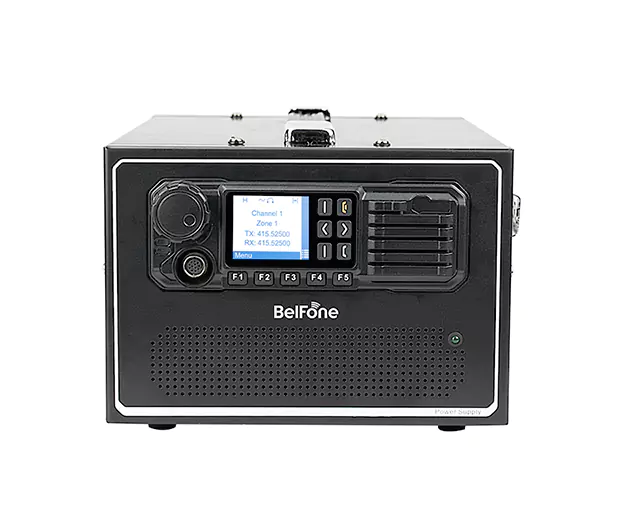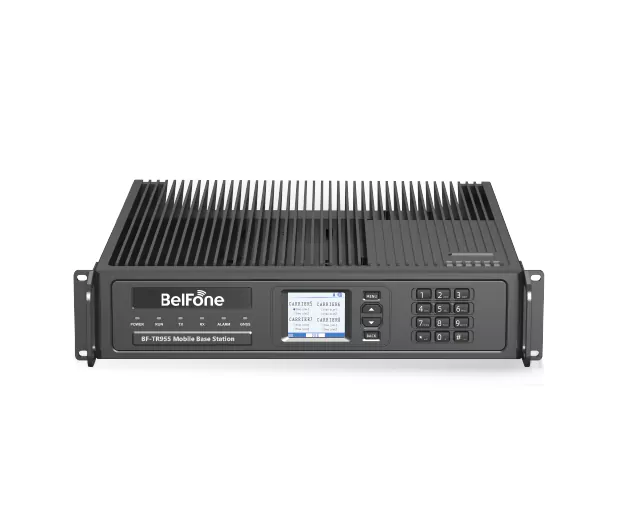The Application of Repeater in Different Environments
release date:2025-07-31
As is well known, in conventional radio applications, the communication distance in an outdoor environment can typically reach 3 to 5 kilometers. This value is a generally applicable reference range, but in actual use, the communication distance is often affected by the surrounding environment and obstacles.
To meet the demands of long-distance communication, especially in scenarios where a larger area needs to be covered, deploying outdoor repeaters becomes an effective solution. The function of a repeater is to receive and amplify radio signals, thereby expanding the communication range. Generally, repeaters are installed at higher positions, such as mountain tops, building rooftops, or towers, because the height of the antenna is directly proportional to the signal coverage range. In general, the higher the repeater is installed, the wider its signal coverage radius will be.
Depending on the specific geographical environments and installation conditions, the effective communication distance of outdoor repeaters can be extended from tens of kilometers to hundreds of kilometers, significantly enhancing the overall communication capability. However, in some complex indoor environments, such as high-rise office buildings, large shopping malls, underground parking lots, and factory workshops, the propagation of radio waves is subject to numerous restrictions. The internal structures of these buildings are complex, with numerous walls, concrete beams and columns, metal frames, and fire compartments, all of which can cause shielding and reflection of wireless signals, resulting in significant signal attenuation or even complete interruption. Take a building as an example; although you may be able to achieve normal two-way communication between the ground floor and the 10th floor, when you attempt to communicate with someone in the basement three floors down, you may encounter a situation where a connection cannot be established. This is because the walls, reinforced concrete structures, and metal materials in the underground space have a much stronger blocking effect on signals than the ordinary floors above ground, thus creating communication blind spots. At this point, a specially designed indoor repeater system becomes particularly important.
Compared with outdoor repeater stations, the deployment of indoor systems is more complex and cannot rely solely on a single antenna device to achieve signal coverage throughout the entire building. Due to the different building materials and partition structure between each floor, as well as the existence of special areas such as ventilation ducts and elevator shafts, these all interfere with the propagation path of wireless signals. In addition, in certain specific places, such as chemical plants and manufacturing workshops in industrial environments, there are a large number of mechanical equipment and electrical devices. During their operation, these devices may generate electromagnetic interference, affecting the stability of wireless communication. At the same time, for safety and compliance reasons, high-power repeater equipment is not allowed to be installed in some places.
Therefore, the planning and implementation of indoor repeater systems must undergo meticulous on-site surveys and professional designs. Usually, a distributed antenna system (DAS) is adopted, with multiple small antennas distributed in different areas of the building to form a multi-point coverage network, ensuring that signals can effectively penetrate all floors and corners. At the same time, the system also needs to be configured with multi-channel and high-capacity wireless intercom platforms based on the actual usage requirements of users, the number of terminals, and communication frequencies, to meet the stability and reliability requirements in high-density communication scenarios.
Through scientific and reasonable system deployment, indoor repeaters can provide comprehensive and stable signal coverage in complex building environments, ensuring that communication devices can work normally at any location and offering a clear and smooth voice communication experience. This provides efficient and reliable communication support for users in various industries.
To meet the demands of long-distance communication, especially in scenarios where a larger area needs to be covered, deploying outdoor repeaters becomes an effective solution. The function of a repeater is to receive and amplify radio signals, thereby expanding the communication range. Generally, repeaters are installed at higher positions, such as mountain tops, building rooftops, or towers, because the height of the antenna is directly proportional to the signal coverage range. In general, the higher the repeater is installed, the wider its signal coverage radius will be.
Depending on the specific geographical environments and installation conditions, the effective communication distance of outdoor repeaters can be extended from tens of kilometers to hundreds of kilometers, significantly enhancing the overall communication capability. However, in some complex indoor environments, such as high-rise office buildings, large shopping malls, underground parking lots, and factory workshops, the propagation of radio waves is subject to numerous restrictions. The internal structures of these buildings are complex, with numerous walls, concrete beams and columns, metal frames, and fire compartments, all of which can cause shielding and reflection of wireless signals, resulting in significant signal attenuation or even complete interruption. Take a building as an example; although you may be able to achieve normal two-way communication between the ground floor and the 10th floor, when you attempt to communicate with someone in the basement three floors down, you may encounter a situation where a connection cannot be established. This is because the walls, reinforced concrete structures, and metal materials in the underground space have a much stronger blocking effect on signals than the ordinary floors above ground, thus creating communication blind spots. At this point, a specially designed indoor repeater system becomes particularly important.
Compared with outdoor repeater stations, the deployment of indoor systems is more complex and cannot rely solely on a single antenna device to achieve signal coverage throughout the entire building. Due to the different building materials and partition structure between each floor, as well as the existence of special areas such as ventilation ducts and elevator shafts, these all interfere with the propagation path of wireless signals. In addition, in certain specific places, such as chemical plants and manufacturing workshops in industrial environments, there are a large number of mechanical equipment and electrical devices. During their operation, these devices may generate electromagnetic interference, affecting the stability of wireless communication. At the same time, for safety and compliance reasons, high-power repeater equipment is not allowed to be installed in some places.
Therefore, the planning and implementation of indoor repeater systems must undergo meticulous on-site surveys and professional designs. Usually, a distributed antenna system (DAS) is adopted, with multiple small antennas distributed in different areas of the building to form a multi-point coverage network, ensuring that signals can effectively penetrate all floors and corners. At the same time, the system also needs to be configured with multi-channel and high-capacity wireless intercom platforms based on the actual usage requirements of users, the number of terminals, and communication frequencies, to meet the stability and reliability requirements in high-density communication scenarios.
Through scientific and reasonable system deployment, indoor repeaters can provide comprehensive and stable signal coverage in complex building environments, ensuring that communication devices can work normally at any location and offering a clear and smooth voice communication experience. This provides efficient and reliable communication support for users in various industries.
Technical support: Longcai Technology


















